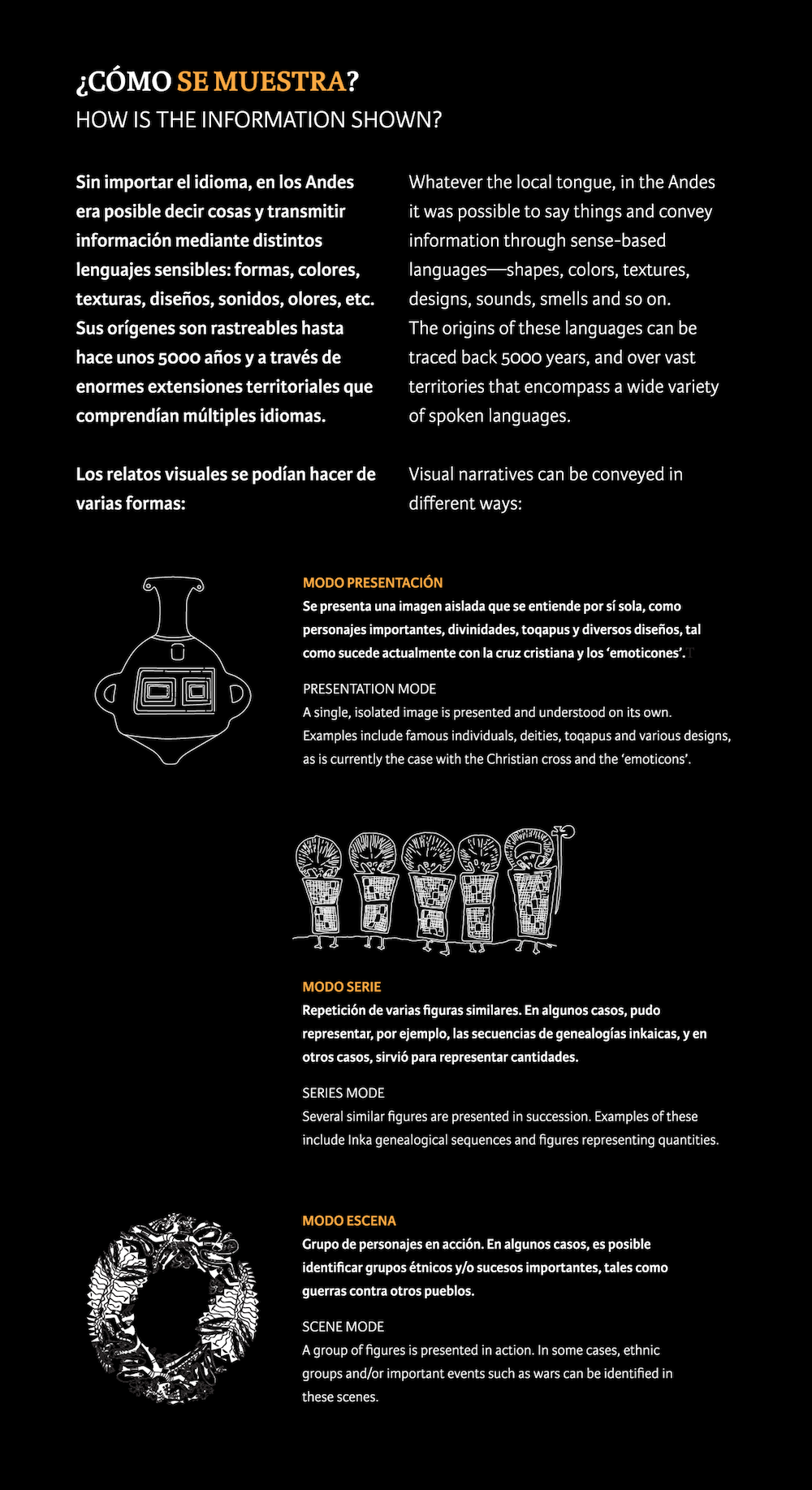
How is the information shown?
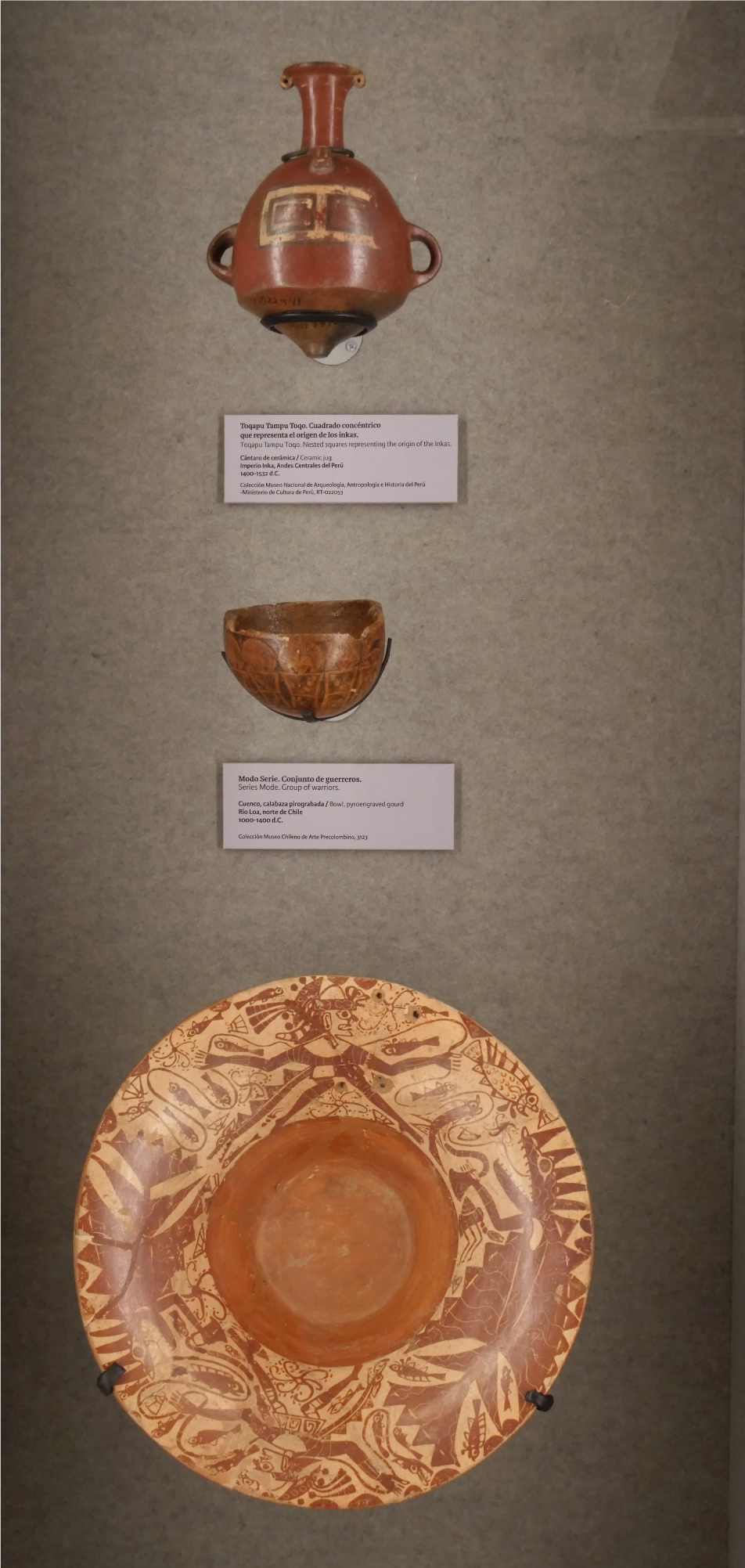
Modes of visual narratives.
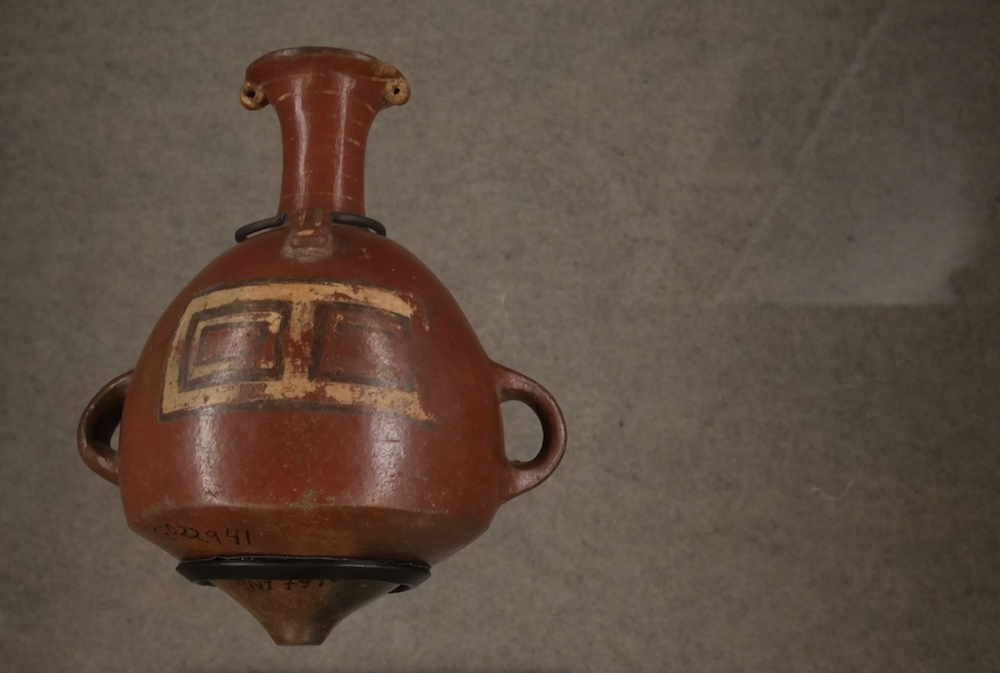
Representation mode. Toqapu qasana. Nested squares representing the origin of the Inkas. Ceramic jug. Imperio Inka, Andes Centrales del Perú
1400-1532 d.C. Colección Museo Nacional de Arqueología, Antropología e Historia del Perú-Ministerio de Cultura de Perú, C-022941.
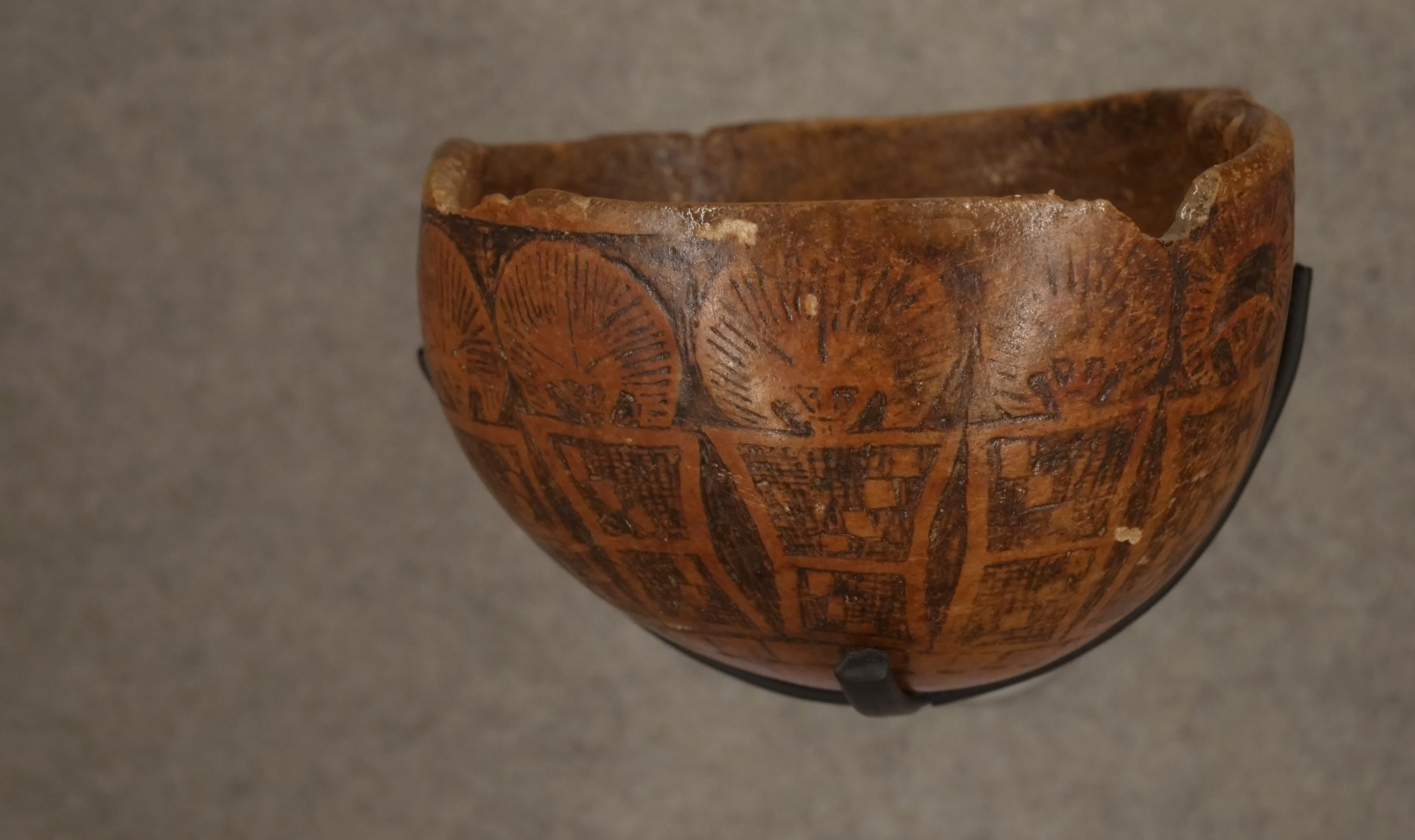
Series Mode. Group of warriors. Bowl, pyroengraved gourd. Río Loa, norte de Chile
1000-1400 d.C.
Colección Museo Chileno de Arte Precolombino, 3123.

Scene Mode. Humans and marine creatures in action. Deep bowl, ceramic. Moche, costa centro norte del Perú,
1-700 d.C. Colección Museo Chileno de Arte Precolombino, 0779.
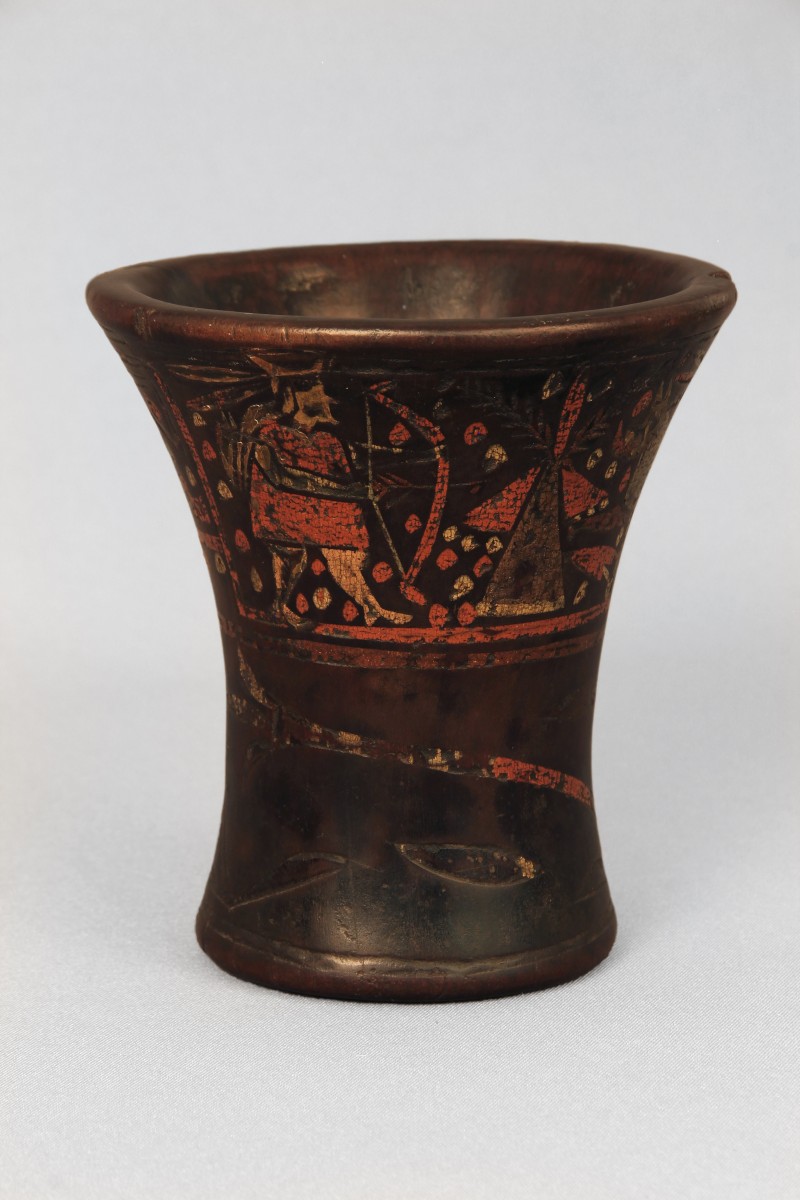
Scene Mode. Inka facing a warrior from the jungle (Anti). Quero cup, wood.
Colonial, Perú
Siglos XVI-XVIII. Colección Museo Colchagua, PE-MCOL 08 (180 x 120 mm).
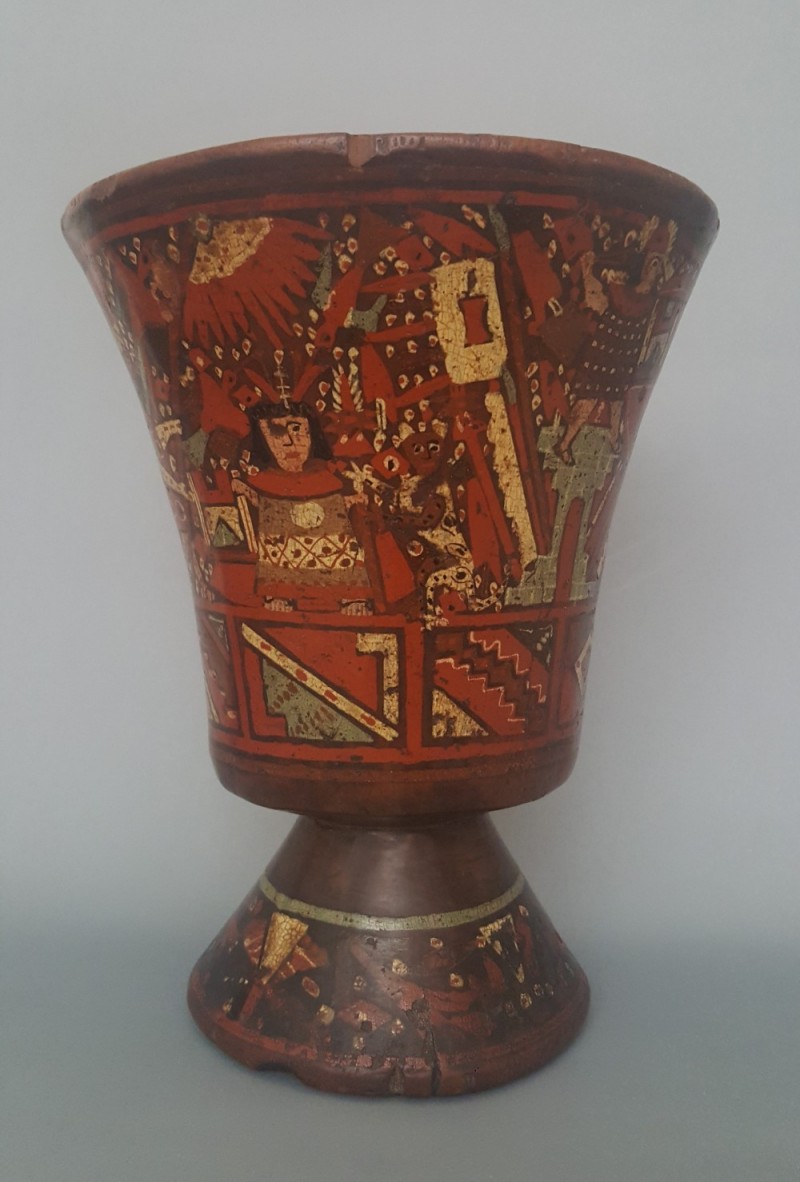
Figurative language. Scene from Inka times. Quero-cup, wood. Andes Centrales del Perú,
Período Colonial, Siglos XVI-XVIII.
Colección Particular, PE-PLE 01.

Visual narratives: Presentation and Scene Modes.
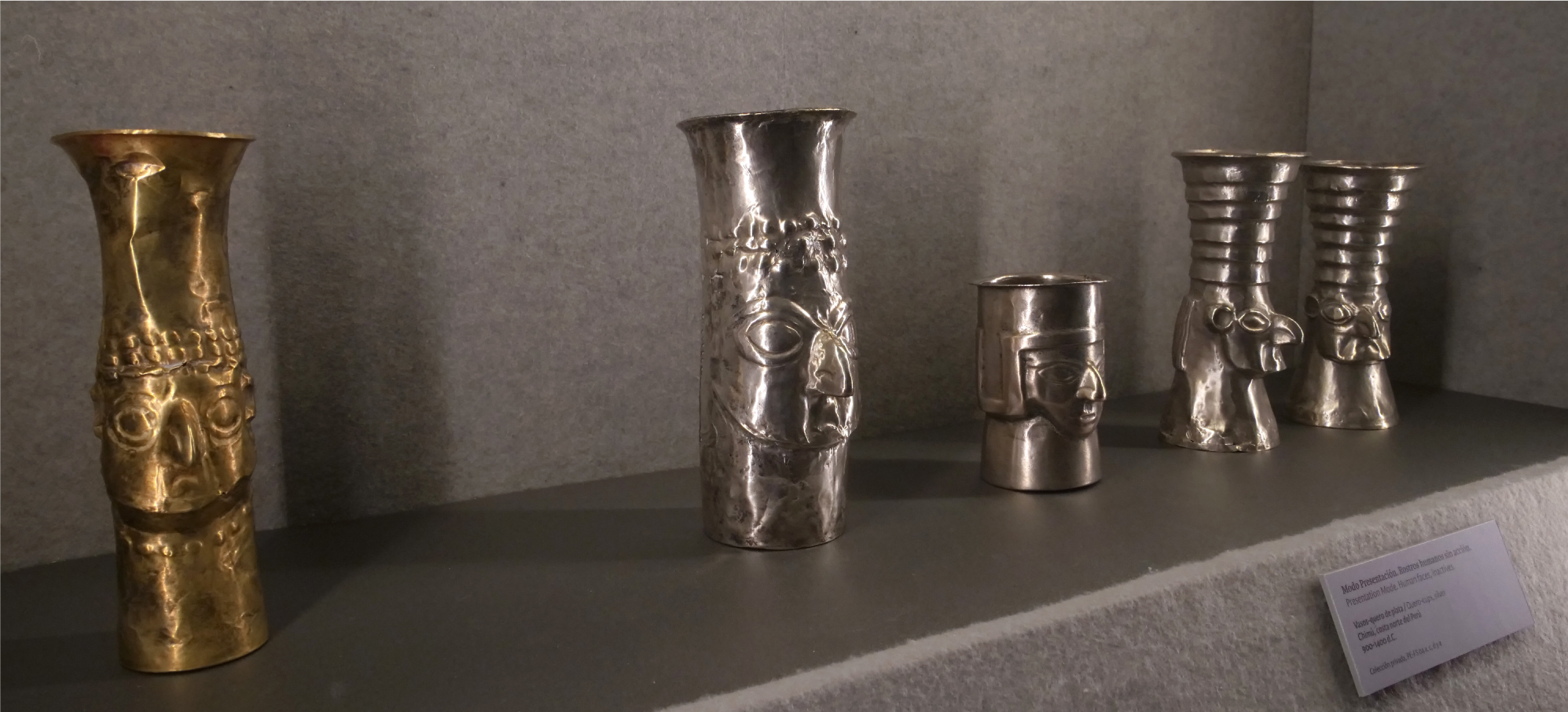
Presentation Mode. Human faces, inactives. Metal quero-cups. Chimú, north coast of Peru, AD 900-1400. Colección particular, PE-FS04 a, b, c, d, e.
Whatever the local tongue, in the Andes it was possible to say things and convey information through sense-based languages—shapes, colors, textures, designs, sounds, smells and so on. The origins of these languages can be traced back 5000 years, and over vast territories that encompass a wide variety of spoken languages.
A single, isolated image is presented and understood on its own. Examples include famous individuals, deities, toqapus and various designs, as is currently the case with the Christian cross and the ’emoticons’.
Several similar figures are presented in succession. Examples of these include Inka genealogical sequences and figures representing quantities.
A group of figures is presented in action. In some cases, ethnic groups and/or important events such as wars can be identified in these scenes.

Scene Mode. Ancient Mural at Huaca de la Luna archaeological site - Trujillo, Peru.
This magnificent relief-painted mural is found on one side of the great ceremonial plaza of Huaca de la Luna pyramid, built by the Moche culture (A.D. 1-700, northern central coast of Peru). It has been called ‘the Mural of Myths’ because it portrays several mythical stories of the Moche society in scenes that include fantastical beings, warriors and other human figures, along with plants and animals, all interacting with each other. Note particularly the two individuals holding long lassoes, one ending in a ‘chakana’ or Andean cross, the other ending in a blue feline. This mural is an example of the ‘scene mode’ of representation in which different elements appear together to form a visual narrative.













































